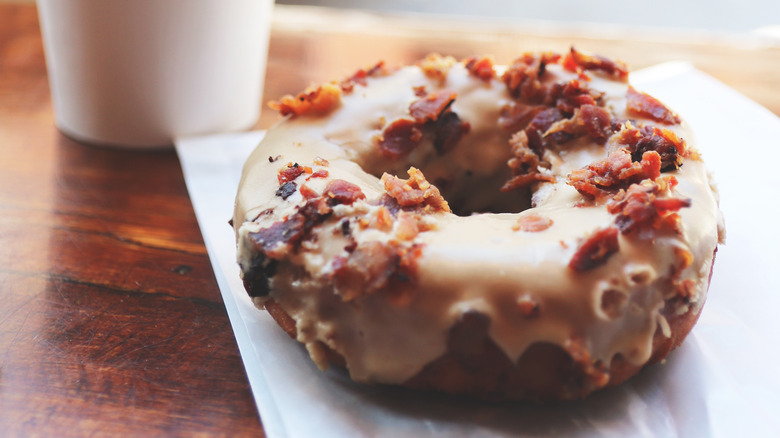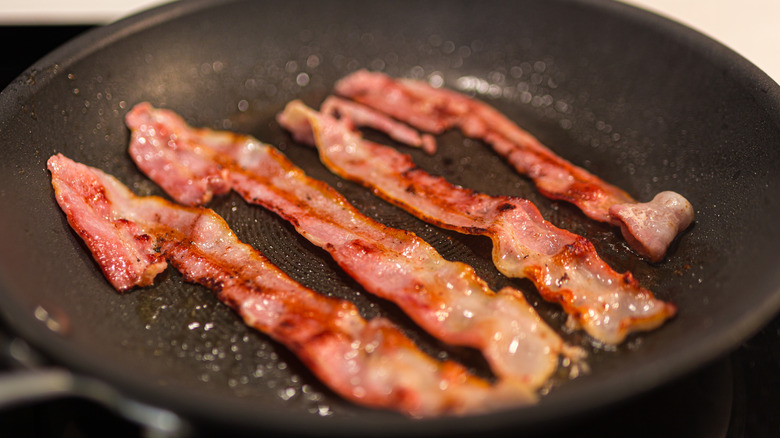The Pitfalls To Avoid When Adding Bacon To Desserts
If you aren't adding crumbled bacon to your ice cream sundaes and cupcake batter, you are surely missing out. Understandably, you might not be on board with the idea of adding meaty flavors to your sweet treat right away. Let this be your reminder that bacon goes with everything — and yes, we mean everything. To get the inside scoop — pun intended — about all things savory desserts, Food Republic turned to Tyler Malek, the co-founder and head chef at Salt & Straw.
This unique ice cream company based in Portland, Oregon has made a name for itself nationwide thanks to its super unique ice cream flavors, offered to customers in a cup or a fresh waffle cone. Salt & Straw is no stranger to using bacon in a recipe, with popular flavors like Brown Ale and Bacon (one of its first flavors ever) and the Buttermilk Pancakes, Bacon, and Eggs seen on menus over the years.
Baking with bacon can be a huge hit or a total miss, depending on how you prepare your protein. Expert chef Malek emphasizes the importance of a high quality crunch. He shared, "... [Always] cherish the crispy-ness of the bacon and do everything possible to ensure it's always crispy." No one wants to bite into a chewy, stringy piece of fat, especially when you're enjoying dessert. To avoid this, the Salt & Straw founder recommends cooking the bacon twice or even opting for candied bacon to ensure that it's as crunchy as can be.
How to ensure your bacon stays extra crunchy
According to our expert, there's a secret to avoiding rubbery bacon — and it helps ensure your dessert comes out perfect. Chef Tyler Malek told Food Republic, "... [We] used to make a bacon streusel topping for apple pie, and if we weren't incredibly diligent at rendering out most of the fat from the bacon before stirring it into our streusel dough, then it would completely sog out the dough during the baking process."
To render the most fat from your bacon, pay close attention to how it looks while you're cooking. The pockets of light colored fat should diminish after enough time on a hot pan, and don't be surprised if the bacon strips start to really shrink down. After your bacon has been thoroughly cooked, place it on a paper towel to dry and cool down. This will absorb even more of that excess fat and leave you with crunchy, crumbly bacon strips that will enhance your sweet treats, not spoil them.
Patience is also key to successfully rendered bacon. A low to medium low setting is plenty hot. It will take more time to cook, but it will also avoid premature browning and burning. To prevent bacon that is burnt and undercooked at the same time, make sure you have a good quality pan that sits evenly on your stove. You can also try preparing bacon in the oven or air fryer if the traditional stovetop cooking method isn't yielding your desired results.


